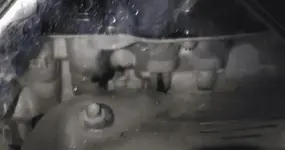Jack Rabbit
Banned
- :
- 18 Mazda CX5 AW
Yep...I agree that Mazda has to take responsibility for a design flaw. My own CX-9 (2018 just got a new cylinder head on the warranty) I think heat cycles is more significant than running over pot holes. My car has been used for shorter trips most of its life. Started to understand something was wrong around 50000 when it was idling rough. I understand that the companies that sell service contracts “refuses” to pay. They are trying to put pressure on Mazda to force them to take responsibility. Mazda most probably do not want to end up in a law suit that includes a warranty company as they have much better idea how common this problem is compared to consumers. Consumers only source for information is the TSB and forums like this. I’m sure the second hand value will be affected in the long run. Would I buy a 2016-2019 with 75000 miles? Hell no.
Nobody wants to pay.
They both should cover it.
Mazda should step up even if it's over the warranty period and fix it since it was a major defect.
If you have an extended warranty, then the extended warranty companies should cover it as thats the whole reason you buy an extended warranty.
Technically both of them should pay to fix it...
While there have been posts of Mazda fixing some that were a few miles over the warranty period, there have been other posts where the customer had a fight on their hands to get it fixed.
And it sounds like the extended warranty companies have been atrocious for trying to deny coverage(but eventually fixing) or occassionally just outright denying the fix.
If this mazda engine fails and they dont fix it, i'll either go back to Ford reliable powertrains or maybe get a Hyundai with 10 year warranties.
Mazda is the GOAT that coulda been. Like that off-the-rails self-destructive sportsplayer that sabotages themselves , uses streoids, drugs, abuses/hits girlfreind/wife or commits some crime, Mazda can control it's destiny but doesn't.
It appears Mazda trys new things but at the customer expense.
Time will tell but it's ranking among the major manufacturers is a telling story. Theres a reason it's 22 while Hyundai has risen to 10.
If they are gonna try new things then they have got to get the improved reliabilty or offer 10 year PT warranties.
The next few years will show.
Will it continue innovation while improving reliabilty? Will it fix the defective cracked engines after warranty period expiry? Will it show it can be a top 10 contender or disappear in the annals of time?
And YES they're FUN to drive but not worth buying a new engine if it fails.
Last edited:



